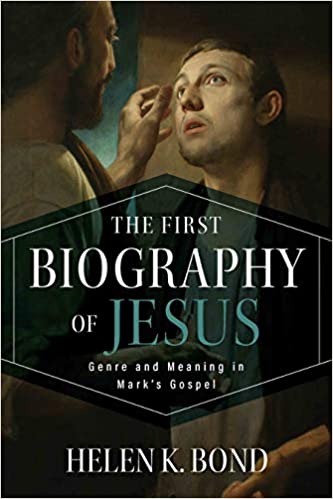BEN: On p. 152 I had an ah ha! moment when you showed that Mark had juxtaposed a two-stage healing of a blind person with the two stage growth in understanding of Jesus by the disciples starting in Mk. 8. Throughout, one of the things you are showing is how carefully crafted and ordered this Gospel is by Mark—there is nothing haphazard about it. This means that older characterizations of Mark’s work as clumsy, awkward, rough and ready simply do not work. Mark may be stark and dark, but it does not lack skill in editing and presentation. For me this raises the question as to why you think Luke, and to a lesser extent Matthew, felt they needed to give Mark a makeover, or at least some modification and amplification?
HELEN:
Yes, I think Mark is very cleverly written; and a large part of his appeal is the way that he hints at more than he says, so the hearer always has the sense that there’s more to learn – deeper mysteries below the surface. But yet another interesting thing about biographies is the extent to which they reflect the interests of their own age. There’s always a need for new biographies of eg Napoleon because every generation brings its own questions and concerns to a great life. And admirers of great men want them to speak to subsequent generations. I don’t doubt that Luke, for example, thought that Mark’s Greek was inelegant (it is!), and no doubt he thought he could do a better job (as Lk 1.1-4 implies), but the main reason why Mark needed to be updated was presumably because Luke was writing for people in a different situation with different concerns. As we’ve already said, Luke’s purpose was far more historical so he omits Mark’s ‘Gentile cycle’ in chapters 7-8 and relocates all Gentile engagement to Acts; his presentation is much more influenced by the OT prophetic tradition than Mark, and he clearly didn’t like Mark’s emphasis on Jesus’ shameful death and so rewrote it in a much more ‘noble’ vein. There’s also precedent for this kind of thing elsewhere in the ancient world where several of Socrates’ disciples wrote their own versions of his life, presumably for different groups of followers.
BEN:
On p. 85 you seem to conclude that the Progymnasmata were part of the third tier of rhetorical education. This seems to be a mistake, since George Kennedy, my teacher at UNC, and others are clear enough that much of the Progymnasmata was intended as elementary rhetorical training.
HELEN:
The recent literature seems quite divided on this. To some extent I don’t think it matters much – as we’ve already discussed, ancient education followed a surprisingly similar pattern but could always be adapted to local conditions. I think it’s quite likely that some of the early progymnasmatic exercises were attempted by students working with a Grammaticus (ie broadly the second educational tier), and Quintilian does complain about those teachers who started on what was really the work of a rhetor. But I don’t see all that much evidence that Mark has followed these exercises; there’s some evidence perhaps of expanding chreiai, and he frequently uses synkrisis, but it seems to be a rather idiosyncratic use (perhaps derived more from hearing it used by others than actually studying it).













